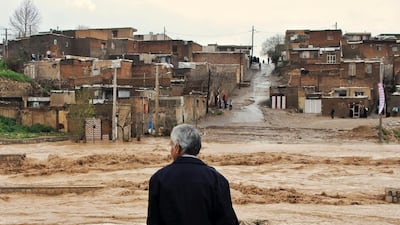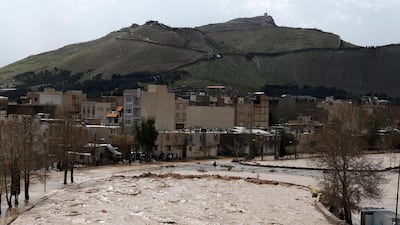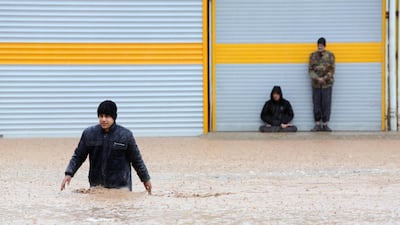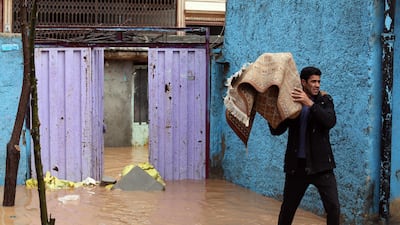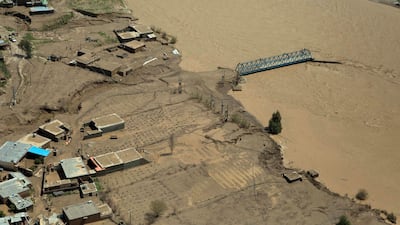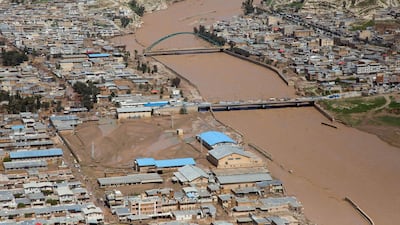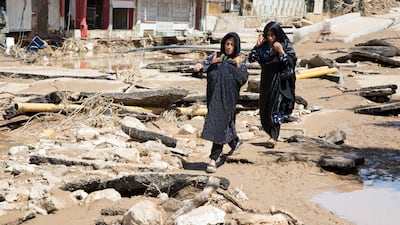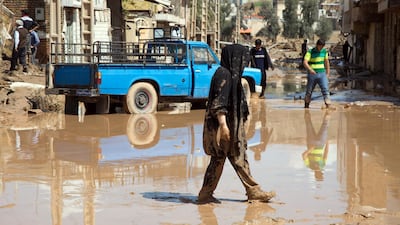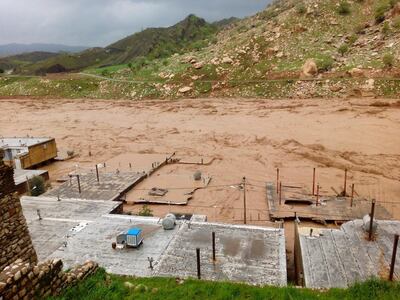Iran on Saturday evacuated more towns and villages threatened by floods after continued rain in the south-west of the country as the nationwide toll from the flooding reached 70.
Many residents of Susangerd, with a population of about 50,000, and five other communities in the oil-producing province of Khuzestan were being moved to safer areas as officials released water from major dams, state TV reported.
"An evacuation order has been issued and we are recommending women and children leave but we are asking the men and youth to stay and help us build floodwalls so we can keep the water out of these cities," the provincial governor, Gholamreza Shariati, told state TV.
"The inflow into the Karkheh river dam has been high ... and officials have had to release more water as the dam was approaching its full capacity," Mr Shariati said.
He said the flooding was the worst in 70 years.
The flooding has caused $230 million (Dh845m) worth of damage to farms in the province, according to an agriculture official quoted by the Iranian Students’ News Agency.
Seven villages threatened by landslides were ordered to be evacuated In neighbouring Lorestan province, state TV said. The rains in Khuzestan are expected to end by Monday.
About 1,900 cities and villages have been affected by floods after exceptionally heavy rains since March 19. At least 70 people have been killed, the head of the country's emergency services, Pirhossein Koulivand, told the state news agency IRNA.
The disaster has left aid agencies struggling to cope and forced 86,000 people to move to emergency shelters.
The government has promised people affected by the floods, especially farmers, that all losses will be compensated.
Iran's state budget is already stretched under US sanctions on energy and banking sectors that have halved its oil exports and restricted access to some revenues abroad.
President Hassan Rouhani, whom critics have accused of mismanaging the response to the disaster, said on Wednesday the sanctions were also hampering aid efforts.
As waters continue to submerge villages, the government said it had deployed more mobile medical units to the southern provinces. Around 1,000 people have been taken by helicopters to safety in recent days.
The head of Iran's Revolutionary Guard reiterated the armed forces "were using all their power" to minimise the damage in Khuzestan. Iranian drilling companies and other energy firms have been assisting with rescue efforts in flooded areas, using pumps to remove water.
